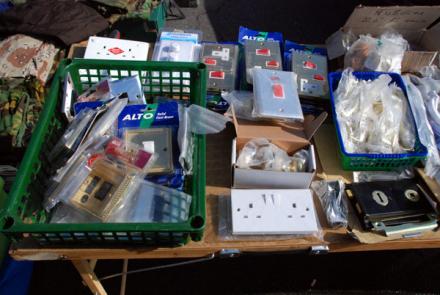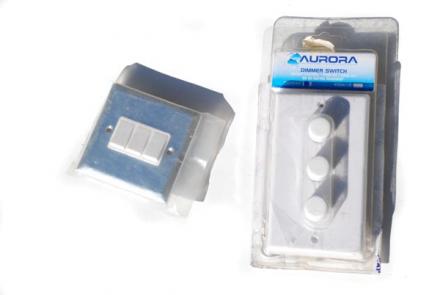Berylium
Only HYDROGEN, HELIUM and LITHIUM are formed during the ‘Big Bang’. BERYLLIUM, which is the next element by ATOMIC weight isn’t formed in the nuclear furnace of a star, but generated during supernova explosions, akin to switching on all the lights.
You use BERYLLIUM in the house every time you switch your lights on or off. It’s used in alloys for domestic light switches (around 2%), to ensure that when you switch them on you can switch them off too.
BERYLLIUM is formed from two colliding HELIUM nuclei, and a third HELIUM nucleus colliding with the BERYLLIUM forms CARBON. A fourth helium colliding with the CARBON forms OXYGEN. Resonances in these nuclei enable these unlikely combinations to stick together, allowing for people such as myself some 10 billion years or more later to comment on the fact, after switching the household lights on and reading up on the anthropic principle.
The mineral beryl is what emeralds are made of. The green colour in ‘gem quality’ emeralds is actually about 2% CHROMIUM.
Emeralds have been traded from at least as far back as the Ancient Egyptians, and can be found in jewellery across Europe.
When OXYGEN isotopes have been analyzed in the gems, their source can be identified as the isotope ratio of OXYGEN -18 and OXYGEN -16 varies from different deposits. In this way, it’s possible to look back at where the gems were dug up, and where they were traded. The Romans and the Celts got most of their emeralds from Austria, with the remainder coming from farther afield, including Pakistan.
India’s Mogul rulers got some of their emeralds from Colombia, so there may well have been a trade across the Pacific Ocean by the Spanish to their colonies in the Phillipines before reaching India.
MUTUALLY ASSURED TOXICITY.
The major user of BERYLLIUM right after World War II and into the 1950s was the Atomic Energy Commission.
BERYLLIUM doesn’t absorb neutrons and can even reflect them. For this reason it is used in nuclear weapons to help reflect, increase and control ‘yield’.
Attempts to develop standards and protection for workers during the Cold War paranoia of the 40’s and 50’s were thwarted as this was seen as potential impediments to ‘defending’ the U.S. against the Soviets.
The only active U.S. beryllium mineral deposit (bertrandite) occurs in ore grades at Spor Mountain, northwest of Delta, Utah. It is expected that the US will remain self-sufficient for another forty years.

